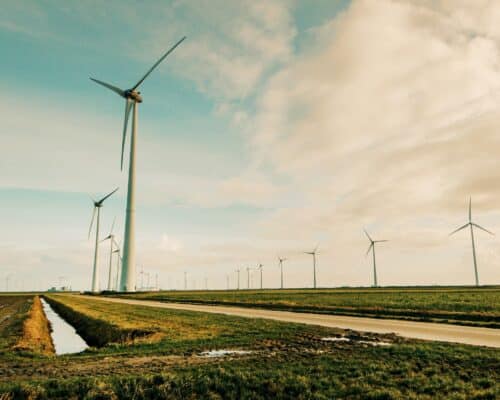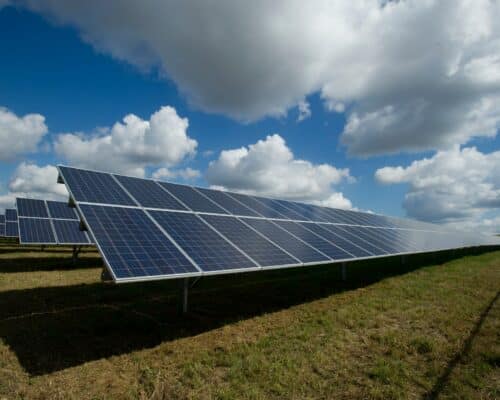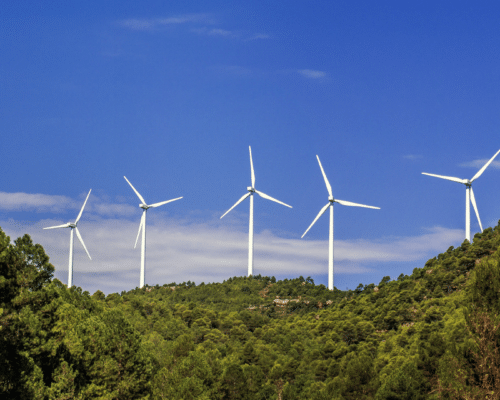Wind Energy in Vietnam – Opportunities and Potential
09 April 2023 – by Viktor Tachev Comments (0)
Vietnam Wind Power 2023
After its widely renowned success in solar power development, Vietnam needs to make wind energy the next growth market. While developers and investors are willing to participate in the country’s decarbonisation journey, current regulatory uncertainty and limitations remain a roadblock. Addressing their concerns would ensure that Vietnam has the needed capital to exploit its vast clean energy potential and get closer to its 2050 net-zero goal.
The State of Solar and Wind Energy in Vietnam in 2023
In 2022, clean energy generation in Vietnam grew by 16% year-over-year. Renewables accounted for 34.7 GWh of generated energy or 12.9% of total power generation.
As of the end of 2022, clean energy makes up 26.4% (20.17 GW) of the installed power capacity. Renewables are the third-largest energy source in Vietnam after coal (32.5%) and hydropower (29%).
While ahead of many other Southeast Asian countries, Vietnam can do even better. The country has the best wind energy resources in the region, with an estimated potential of up to 600 GW.
In the past, it has demonstrated a remarkable track record for taking advantage of its vast clean energy resources.
Vietnam came into the spotlight when in 2020, it became a top 10 solar power market in just a few months. This allowed the country to achieve its 2025 target five years early.
In 2021, it recorded 337% in solar output growth compared to the previous year. The country moved way ahead of the other top 10 markets.
Vietnam’s Regulatory Landscape: Uncertainty that Risks Impeding Potential Growth of Renewable Energy
According to analysts, the country’s recent steps on the regulatory front risk jeopardising its clean energy progress.
The Power Development Plan 8 (PDP8) has been revised several times over the past two years. The plan has been pivoting between increased clean energy adoption and turning back to coal and gas. Furthermore, the plan now remains in limbo due to clean energy pricing issues.
Furthermore, while the spirit of the plan indicates a potential focus on increasing renewable energy capacity, including wind power capacity, the country’s partnership with Japan signals that questionable decarbonisation technologies, including hydrogen and ammonia co-firing schemes, might also be considered.
Under the planned Just Energy Transition Partnership (JETP), Vietnam targets a 47% share of renewable power in the total energy mix by 2030. While the JETP aims to deliver a massive USD 15.5 billion in clean energy investments, concrete details are lacking. Analysts warn that the JETP remains more of a “black box” rather than a transparent investment framework.
Furthermore, Vietnam’s transitional pricing for solar and wind power projects is between 16% and 29% lower than the original incentive FIT (feed-in tariff) rates. Analysts warn that the country’s Power Purchase Agreement is putting an excessive burden on clean energy developers. The reason is that it doesn’t allow direct engagement in energy provision to businesses. However, the government is now working to change this. It also lacks government provisions or “take or pay” obligations.
According to estimates, introducing a competitive bidding mechanism in Vietnam would slow the development of solar and wind power plants. Furthermore, it is expected to decrease the internal rates of return for developers of onshore wind projects from 18-22% under the previous FIT to 8.2-11% under the bidding mechanism.
Dynamics of the Clean Energy Investment Landscape
In the past, Vietnam has been successful in attracting clean energy investments. The country even demonstrated the potential to become one of the most attractive markets for green capital. However, recent developments have negatively affected investment growth.
Clean energy investments declined from a peak of USD 8.7 billion in 2020 to USD 6 billion in 2021.
As of 2022, Vietnam ranks 14th out of the emerging markets and 40th in the global ranking of the most attractive markets for energy transition project investment, according to Global Climatescope. Furthermore, the agency warns about the uncertainty in future revenue and offtake schemes for solar and wind projects.
Bloomberg’s analysts note that, due to regulatory uncertainty, the country saw a massive drop in new wind energy plants in 2022. The administrative burdens and the lack of investment certainty deterred project developers from moving ahead with their wind development plans. Due to this, many offshore wind projects face delays or are built but sitting idle.
Currently, funding for renewable energy projects comes mainly from domestic sources, with 58% of the projects developed by Vietnamese companies. Only 12% are executed without a Vietnamese partner.
Vietnam’s Net-zero Mission Can Succeed But Requires Effort
Experts warn that without foreign investment, Vietnam might fail to reach net-zero by 2050. McKinsey estimates the country’ needs USD 30 billion (10% of its current GDP) annually in energy transition investment.
However, Vietnam must concentrate on improving its investment climate to attract the needed capital. Among the leading areas for improvement is the PPA structure, which currently limits clean energy developers. There are already calls for the country to allow offshore wind developers to take advantage of a FIT system. According to experts, this would ease and speed up the initial mass deployment of projects. After the market becomes more mature, the government can push ahead with its bidding mechanism plans.
Other measures that the country can focus on to attract more investments include introducing ambitious clean energy subsidies, ensuring a sufficient supply to support the expansion ambitions of foreign manufacturers, allowing companies to sign direct PPAs and more.
Indirect measures include removing incentives for fossil fuels and a strict fossil fuel phase-out policy.
Last but not least, Vietnam should focus on proven decarbonisation solutions that are ready to be deployed from the get-go and those that have massive potential, like solar and wind, instead of unproven technologies.
Investing in Offshore and Onshore Wind Power Projects in Vietnam
Vietnam’s clean energy success story hasn’t gone unnoticed. Some of the world’s leading wind energy developers, including Ørsted, already have offices or project plans in the country.
Foreign investments have been critical for empowering Vietnam’s clean energy success. However, to continue into the future, foreign investors need incentives.
Granting these incentives and introducing regulatory reforms that ease and stimulate foreign investor participation is in Vietnam’s best interests.
The country is among the top five most exposed to the climate crisis. Climate risks aside, speeding up clean energy development and easing foreign energy transition investments would open a USD 1.5 billion revenue opportunity for local banks. On a national scale, the support for climate-friendly technologies can create new value pools worth between USD 9 trillion and USD 12 trillion by 2030.
The opportunities are there for the taking, but so are the risks of missing out.
by Viktor Tachev
Viktor has years of experience in financial markets and energy finance, working as a marketing consultant and content creator for leading institutions, NGOs, and tech startups. He is a regular contributor to knowledge hubs and magazines, tackling the latest trends in sustainability and green energy.
Read more





